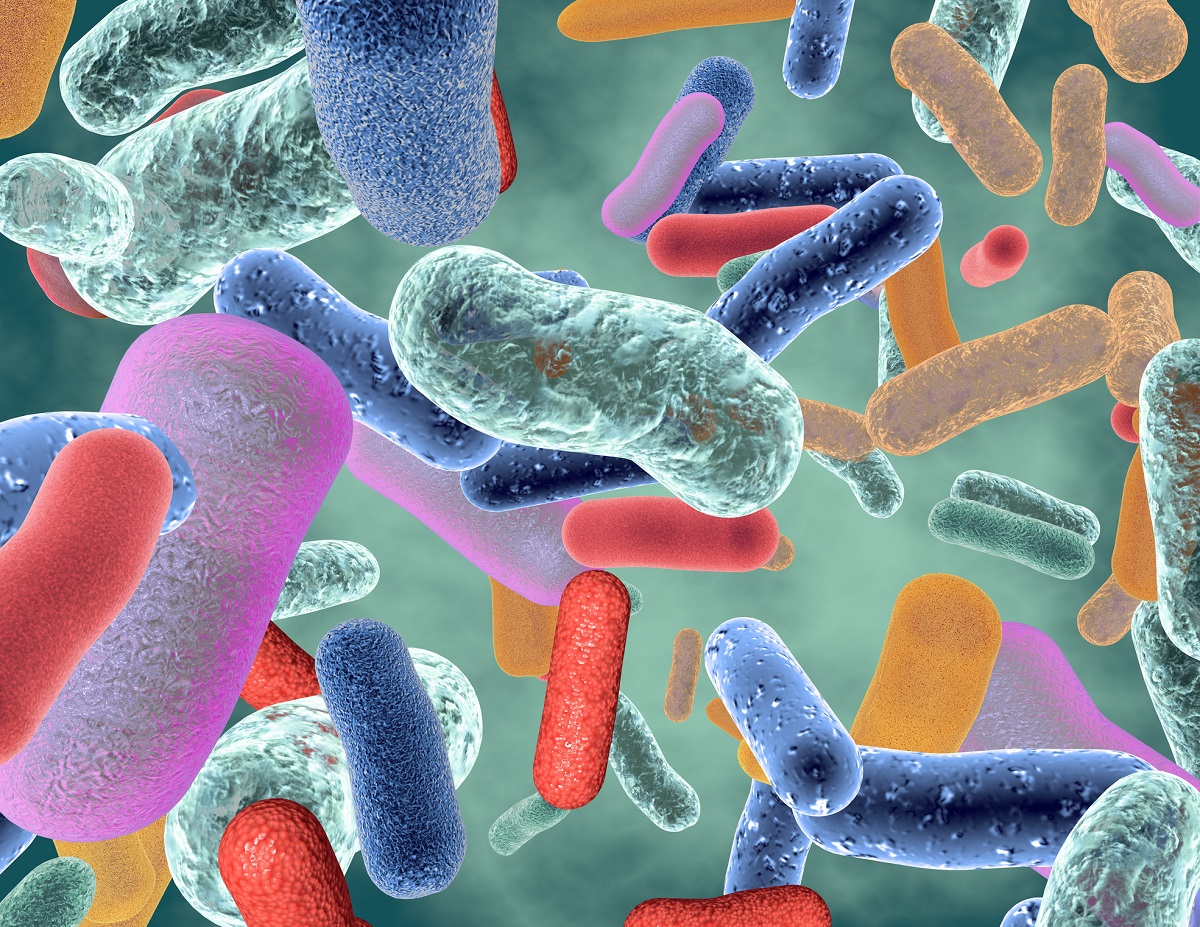Essential mechanism for bacterial gut colonization discovered

New light has been shed on a key event that contributes to the successful colonization of bacteria in the gut of mice, according to a new study from Yale University and Penn State. The study, published in Science, reveals that a physical process called “liquid-liquid phase separation” is essential for the survival and colonization of the beneficial bacteria Bacteroides thetaiotaomicron in the gut.
“In our field we are trying to understand how bacteria can colonize your gut and what the molecular components are that allow these organisms to reside in your intestines, because not all bacteria can,” said Guy Townsend, PhD, assistant professor of biochemistry and molecular biology at the Penn State College of Medicine and an author on the paper. Prior to this work, researchers did not understand the mechanisms that allowed B. thetaiotaomicron to thrive in the gut of mammals.
The researchers demonstrated the crucial role played by an “intrinsically disordered domain” (IDR) within a particular protein in the bacterium, called Rho, that facilitates liquid-liquid phase separation.
Liquid-liquid phase separation is when two liquids that don’t mix well separate into different parts because of their chemical differences. This process helps cells create structures that don’t have a membrane and are important for many cell functions.
The researchers found that the IDR — an intrinsically disordered domain within a protein that lacks a stable three-dimensional structure — in the Rho protein plays a vital role in facilitating liquid-liquid phase separation to help stop the production of messenger RNA molecules during gene expression.
The Rho IDR helps to decide which genes are switched on or off by regulating transcription termination. Transcription termination is when a cell stops making a messenger RNA (mRNA) at a specific place during gene expression. Transcription terminations happen at defined points to regulate which genes are turned on or off.
Studying Rho presents a challenge because this protein is essential for the bacteria to survive, and removing the entire Rho protein just kills the bacteria, according to Townsend. The team found that if it took just the IDR piece of the Rho protein away, the bacteria could grow in a test tube, but not thrive in the gut of a mouse. The bacteria could not colonize the gut normally, Townsend explained. The team discovered that the IDR was critical for life in the mammalian intestine.
“If you take your average human and you collect a poop sample, you can pretty quickly tell which bacteria are in there. This particular bacterium, B. thetaiotaomicron, and its cousins are almost always there. They employ many different biological functions that make them really good at occupying this space, and this is one of them,” Townsend said. “We think that other beneficial bacteria will most likely act the same way.”
If other beneficial bacteria do act the same way, the discovery of liquid-liquid phase separation means that this process could be manipulated to impact the expression of certain genes and could end up being a therapeutic target. These findings could be a step toward significant implications for human health, as manipulating the gut microbiota could lead to medical interventions that promote gut health and treatments for diseases of the gut like Crohn’s disease and colitis, which affect more 3 million adults in the United States, according to the Centers for Disease Control and Prevention.
“One of the biggest questions in our field is how do we change the composition of a microbiome in a person, and in this work you are looking at quite an actionable target because we now know the molecular components that control this termination factor activity, and we know which piece of the protein mediates this activity. I predict that this is shared across many different gut bacteria and that we could modify the microbial ecology of the intestinal flora using therapeutics,” Townsend said. “I can’t say that this would happen soon, a lot more work needs to be done. I can imagine a tailored therapeutic approach where you could turn things on and off in a way that would allow you to introduce a new microbe in stable way and then resume normal activities in a person’s microbiota.”
Further work is needed to understand the full implications of liquid-liquid phase separation in the physiology of bacteria. However, this research has established the critical importance of this process to enable bacteria to successfully populate the gut of mammals.
Townsend, who started this research as part of his postdoctoral fellowship in the lab of Eduardo A. Groisman at the Yale School of Medicine, will continue this work by attempting to understand how different genes that are regulated by this transcription termination factor work, and how this transcription termination factor specifically controls the synthesis of the products that are encoded by those transcripts.
Townsend is associated with the One Health Microbiome Center, part of the Huck Institutes of the Life Sciences.
Additional authors on the paper from the Yale School of Medicine include Emilia Krypotou, Xiaohui Gao, Shoichi Tachiyama, Jun Liu, Nick D. Pokorzynski, Andrew L. Goodman and Eduardo A. Groisman.
This work was funded by the National Institutes of Health.
If you're having trouble accessing this content, or would like it in another format, please email Penn State Health Marketing & Communications.
